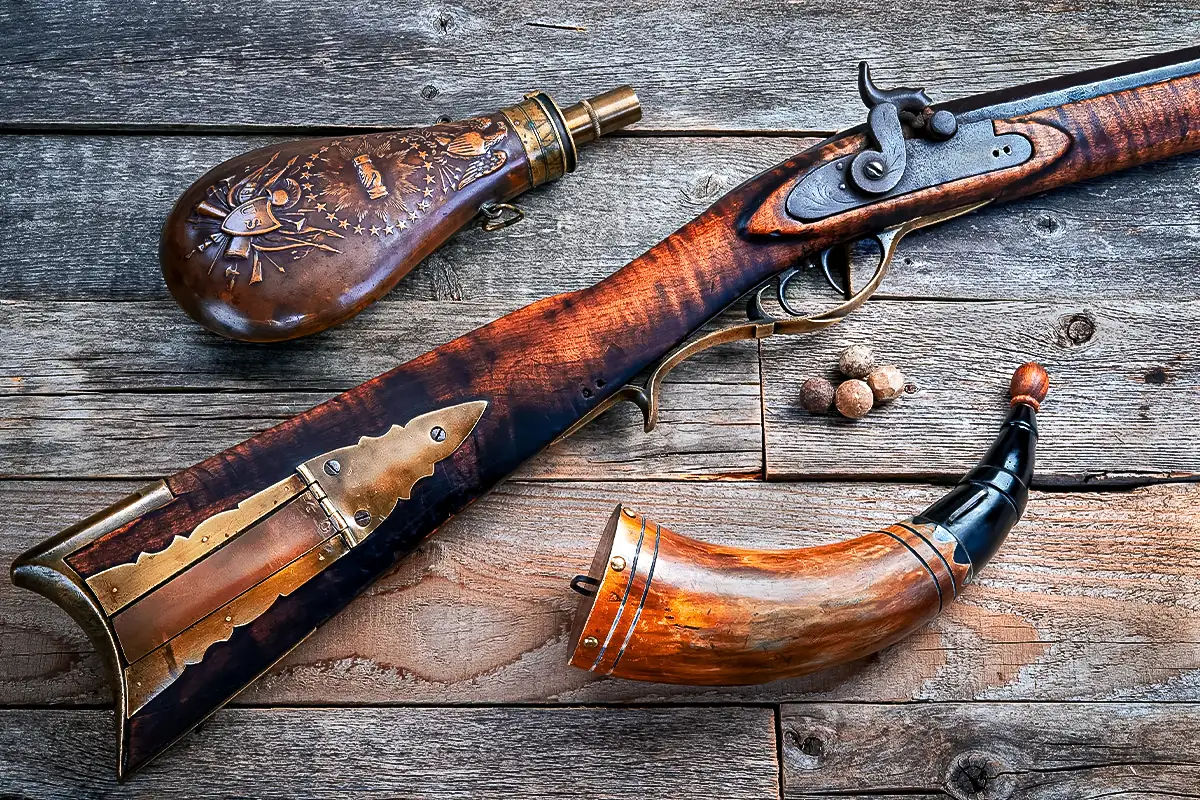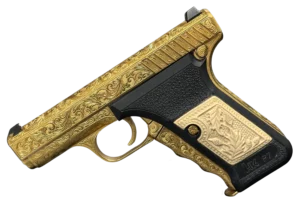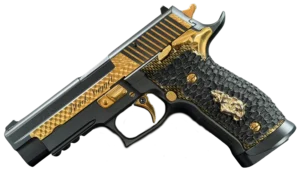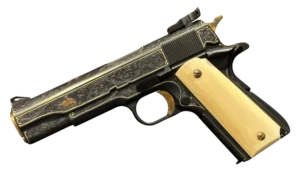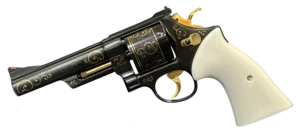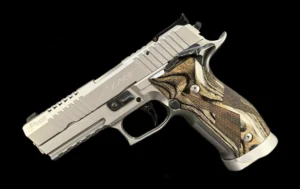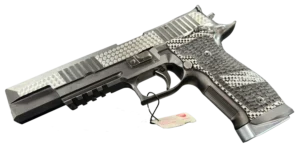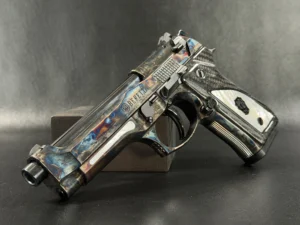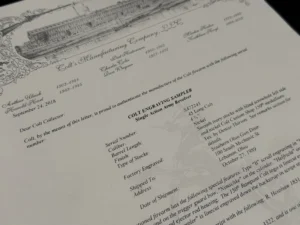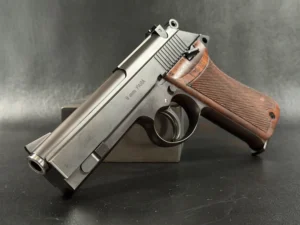Key Takeaways:
- Authenticity isn’t just about the gun — it’s about the story: The real value in collecting antique black powder firearms often lies in the details: who made it, where it’s been, and whether that patina is genuine or just a fancy touch-up job. A beat-up flintlock with solid documentation can outshine a shiny fake any day.
- Restoration is a tightrope — and not always worth walking: Fixing up an antique might seem like a good idea until you realize you just wiped away 200 years of history with sandpaper. Sometimes less is more. Know when to leave it alone.
- You’re not just collecting objects — you’re curating history: This isn’t about hoarding old guns. It’s about preserving craftsmanship, honoring forgotten hands, and keeping stories alive. If that excites you? You’re in the right place.
A rambling, curious guide for the historically obsessed
Let’s get this out of the way: antique black powder firearms are addictive. Not in the dangerous, “sell your car for a rare flintlock” kind of way (although, hey, no judgment), but in the way that pulls you into late-night rabbit holes of colonial arsenals and obscure percussion cap makers. They’re more than just relics. They’re stories — heavy, tangible pieces of history you can hold in your hands.
But here’s the thing: collecting them? Not as simple as picking up a cool-looking musket at a flea market and calling it a day. The world of antique firearms is surprisingly deep, weirdly specific, and occasionally full of traps for the unwary.
So let’s wander through it together.
Why These Old Guns Still Captivate Us
Antique black powder firearms are strange little time machines. They whisper stories from duels, dusty frontier outposts, and revolutionary battlefields. And unlike modern guns — sleek, cold, often plastic — these were made by hand. Real craftsmanship. You’ll find delicate scrollwork next to brutally simple iron sights. Some are works of art; others are crude as hell — but all have a pulse.
What draws people in varies. Some are in it for the engineering. Others love the aesthetics — the patina, the brass, the smell of burnt powder. And some, let’s be honest, just want to own a piece of history that no one else on the block has.
So… What Even Is an Antique Black Powder Firearm?
Let’s break it down without turning into a textbook.
“Black powder” just means the old-school gunpowder — the smoky, sulfurous stuff used before smokeless powder took over in the late 1800s. If a firearm was designed to shoot with that kind of powder, it counts. Think flintlocks, percussion caps, matchlocks (yes, those exist), and even some early cartridge guns if they’re old enough.
Legally, in the U.S., anything made before 1899 is often considered an “antique firearm.” But don’t take that as gospel — different countries (and even states) have their own rules.
A Quick Historical Detour
We can’t talk about black powder guns without tipping our hat to history. These weren’t just weapons — they shaped empires. From the arquebuses of the 1500s to the muskets of the Civil War, black powder firearms were at the center of some of history’s biggest turning points.
And watching their evolution is kind of like flipping through the blueprints of human innovation. Matchlock became wheellock. Wheellock gave way to flintlock. Then came percussion caps, and finally — reluctantly — metallic cartridges. Each step changed not just how people fought, but how they thought about warfare, defense, and even personal honor.
Kind of wild when you think about it.
You Want to Collect? Here’s Where It Gets Real
So you’ve caught the bug. You want to start collecting. Maybe you’ve already got your eye on a Kentucky long rifle or a Dragoon revolver. Here’s what you should actually be thinking about before you spend a dime:
1. Is it real? Like… actually real?
Reproductions are everywhere. Some are honest about it. Some are sneaky. Some are so well-made they fool people who should know better.
Look for serial numbers, proof marks, and manufacturer stamps. And don’t be afraid to ask for documentation — provenance, as the pros call it. Bonus points if the seller has an old receipt, battlefield letter, or anything else that tells a story.
2. Condition is everything — but originality is more.
You’ll see guns that look pristine but have been restored to within an inch of their lives. Then you’ll see rough, rusty pieces that haven’t been touched since the Civil War. Weirdly enough, the beat-up one might be worth more.
Why? Because collectors value originality. The moment you start swapping parts or refinishing the wood, the historical integrity takes a hit. That’s not to say restoration is bad — just that it’s a tightrope.
3. Know your makers and models.
Some names carry weight. A Colt Paterson? Museum-worthy. A generic Belgian knockoff from the 1860s? Maybe not. Dig into the history behind certain manufacturers and models. Learn what makes them special — or not.
And yeah, this takes time. You’re gonna read a lot of forum posts and book chapters. But if you’re the type who gets excited by that… welcome. You’ve found your people.
Rarity vs. Value — Two Very Different Things
Here’s something that trips people up: just because something is rare doesn’t mean it’s valuable. You might stumble on a one-of-a-kind rifle made by a backwoods blacksmith in 1832. Cool? Definitely. But if no one knows what it is, or no one cares, good luck selling it for more than beer money.
What is valuable? Guns tied to specific historical events. Firearms with documented military use. Pieces that come with a story and proof to back it up.
So yeah — rare matters. But context and condition? Way more important.
Legal Stuff (Sorry, We Have to Go Here)
Not gonna lie, the laws around antique firearms are a mess. In many places, pre-1899 black powder guns aren’t treated the same way as modern firearms. You might not need a license to buy one. You might be able to ship it across state lines. Heck, you might be able to hang one on your wall with zero paperwork.
But.
Don’t assume. Always check your local laws. And if you’re crossing borders — especially international ones — be very careful. What’s legal in Idaho could get you fined (or worse) in Germany or Canada. And some places treat antique gunpowder as hazardous material. So yeah… do your homework.
Preserve or Restore? The Eternal Collector’s Debate
This one’s tough.
Purists will tell you to leave the gun exactly as it is. Dust it off, oil it gently, and never, ever replace that busted screw.
Others think there’s nothing wrong with restoring a piece to its former glory, as long as you’re honest about it.
Truth is, it depends on the gun — and what you want from it. A rare, high-value musket from 1776? Probably best left untouched. A more common percussion revolver from the 1850s? Maybe it’s worth fixing up — carefully.
Just know this: bad restoration can destroy value. Once you sand off that original finish, there’s no going back.
How to Store and Handle Them (So You Don’t Ruin Everything)
Look, they may be antiques, but they’re still guns. Even if they haven’t fired a shot in 150 years.
Basic rules:
- Always assume it’s loaded.
- Don’t point it at people. Ever.
- Keep your finger off the trigger.
- Don’t dry-fire flintlocks or percussion caps — you’ll break something delicate.
Storage matters too. Keep them in a dry, stable environment. Humidity is the enemy. Use silica gel packs. And please don’t leave them in the attic next to a leaky vent and grandma’s Christmas decorations.
Resources and People to Know
Here’s something you might not expect: collecting antique firearms is kind of a team sport. Sure, it starts alone — you, your curiosity, maybe a dusty book or two. But soon enough, you’ll start bumping into others who are just as obsessed.
Join a collector’s club. Go to a gun show. Subscribe to obscure journals with names like “The Black Powder Chronicle.” You’ll learn more in one conversation with a seasoned collector than from ten YouTube videos.
And while we’re at it — build a library. Get books. Real, paper books. Some of the best info is still offline.
A few favorites:
- Flayderman’s Guide to Antique American Firearms
- The Gun Collector’s Handbook of Values
- Auction catalogs from Rock Island, Morphy, or Bonhams (they’re goldmines)
Final Thoughts (Or, Why This Is More Than a Hobby)
Collecting antique black powder firearms isn’t just about owning stuff. It’s about connection. To history. To craftsmanship. To the weird and wonderful moments that shaped the world.
Every piece has a story. Sometimes you have to dig for it. Sometimes it comes printed on the back of an old receipt in a cigar box. But it’s always there — waiting.
And yeah, maybe it’s nerdy. Maybe your friends don’t get it. But you do.
That flintlock you found at an estate sale? It saw more than you ever will.
That old musket with the initials carved into the stock? Somebody’s son carried that through a war.
You’re not just collecting. You’re preserving.
And there’s real magic in that.
Frequently Asked Questions
Great question — and honestly, one of the most common pitfalls for new collectors. Look for proof marks, serial numbers, and manufacturer stamps. If the seller says “it’s old” but can’t provide any paperwork or backstory? That’s a red flag. Bonus points if there’s provenance — letters, receipts, or even a handwritten note tucked in the box. And when in doubt, ask someone who knows their stuff.
Depends on where you live. In many U.S. states, black powder firearms made before 1899 aren’t legally considered firearms, which means you can own or even ship them without a federal license. But local laws still apply, and things get trickier fast if you’re crossing state lines — or, God forbid, borders. If you’re not sure, take five minutes and look up your state laws. Seriously. It’ll save you headaches later.
Preservation means keeping the gun exactly as it is — dusting it off, oiling the metal, but not messing with its guts. Restoration means actually repairing or replacing parts to “make it whole” again. The catch? Restoration, if done badly (or even just unnecessarily), can tank the value. When in doubt, leave it alone — or talk to a professional before lifting a screwdriver.
Yes… but. Some collectors absolutely fire their antiques, especially if the gun is structurally sound and has been cleared by a gunsmith. But black powder firearms can be fragile, and a small crack you didn’t notice could turn a range trip into a very bad day. If you’re dead-set on shooting, consider getting a reproduction — they’re made to handle it, and you won’t risk damaging something irreplaceable.
A few things: condition, rarity, provenance (aka the backstory), and historical significance. A rough-looking gun connected to a known battle or soldier might be worth way more than a pristine but generic one. And just because it’s old doesn’t mean it’s valuable — context is everything.


